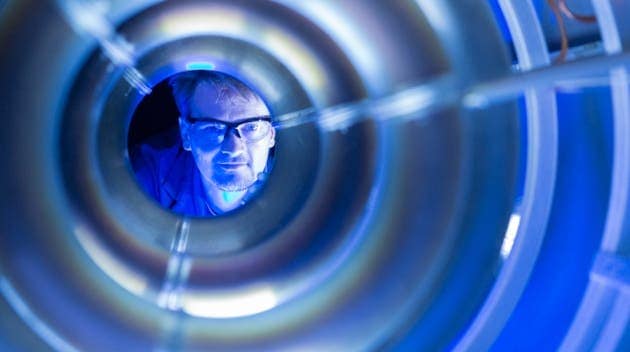Lockheed Martin has officially entered the race to achieve nuclear fusion at room temperature on 15 October, laying out a 10-year roadmap to commercialize a reactor that would fit on the back of a lorry. The company has been working on the project for several years, but they’ve been extremely secretive about it until now, when they’ve released a grandiose plan to take the energy world by storm. However, most experts from the field don’t believe in their success.
Cold Fusion – Between Myth and Reality
Cold fusion is a hypothetical type of nuclear reaction that would occur at, or near, room temperature, compared with temperatures in the millions of degrees that are required for “hot” fusion, which takes place naturally within stars. Naturally, if this were possible, it would be a source of immense energy, but the problem is that there is currently no theoretical framework in which cold fusion would work.
The general scientific consensus is that it can’t work, but that hasn’t stopped a minority of scientists still researching the subject. There have been some claims about successful cold fusion, most notably in 1989, when Martin Fleischmann (then one of the world’s leading electrochemists) and Stanley Pons reported that their apparatus had produced anomalous heat which could only be explained by this phenomenon. However, when others tried to replicate the experiments, the results simply weren’t consistent. The reputation of the two physicists quickly faltered and cold fusion became almost a taboo in the scientific world.
There are many reasons why known fusion reactions are unlikely to be possible. The simplest one is that fusion, as we know it, can only take place at immense heats, like for example in stars. However, when some NASA and CERN researchers tried to replicate the experiments in 2012, they were intrigued by the results. They found that while fusion wasn’t happening, energy was still released, in varying amounts. They explained this as a result of a complicated, but plausible phenomenon, and they explained that this was probably what Fleischmann and Pons observed back in 1989 – not cold fusion.
So there is definitely some potential in the method described 25 years ago… but could it actually be cold fusion? Well, Lockheed took a different approach.
Lockheed Martin’s 10 year plan

Image credits: Lockheed Martin.
The company currently has a roughly half-scale experimental device, and says that it is now gearing up to produce a compact 100-megawatt reactor. The goal is to develop a prototype in 5 years which will sustain short reactions (on the scale of a few seconds), and in 10 years, develop a commercially available product. Should they succeed, the result would be basically limitless, clean (0 emissions) and cheap energy. It would be without a doubt the discovery of the century and would be a huge leap for mankind, transforming the global sector and global economics with it. But can this really be done?
Everyone is excited to see Lockheed Martin take the plunge into the energy sector, but this has got to be the most ambitious claim of a big company I’ve ever heard. The aerospace and defense giant is not known for making unplausible claims – on the contrary. They’re known as one of the most serious and reliable players in the business. So they’re certainly serious about this, but the experts are not convinced.
Lockheed has yet to release any data from its initial experiments and will almost certainly not reveal them any time soon – so it’s practically impossible to know if what they are doing is different and is actually working. Furthermore, the scientific model behind their project has not yet been revealed, and as I said above, there is no theoretical framework in which cold fusion could work.
“It’s hard to tell the man on the street anything from a scientific point of view,” says Stewart Prager, director of the Department of Energy’s Princeton Plasma Physics Laboratory in New Jersey. “It’s not clear what their science claims are.”
Why now?
The company has been working on cold fusion for years without releasing any results to the general public or the scientific community – so why come out now? Well, Lockheed Martin has applied for a number of patents, and those patents would have definitely caused a stir. They wanted to be sure that the “people have the right context when those patents come through”. Lockheed Martin fusion project leader Tom McGuire also said that starting of now, they will publish their results in peer reviewed journals; he expects “the big Nobel-prize moment” to come up in about five years.
“This is going to be conducted in the open,” he says.
McGuire acknowledges that his team still has a long way to go, but he explains that the road is set in front of them – and the development of the program has no real reason of failing. But having seen so many world class scientists fall prety to the mirage that is cold fusion, can his claims really be trusted? I’m not sure. I want to believe, and Lockheed Martin is certainly a company which should be taken seriously, but at the moment, there are just to many question marks. I guess we’ll just have to wait this one out and see what happens.


